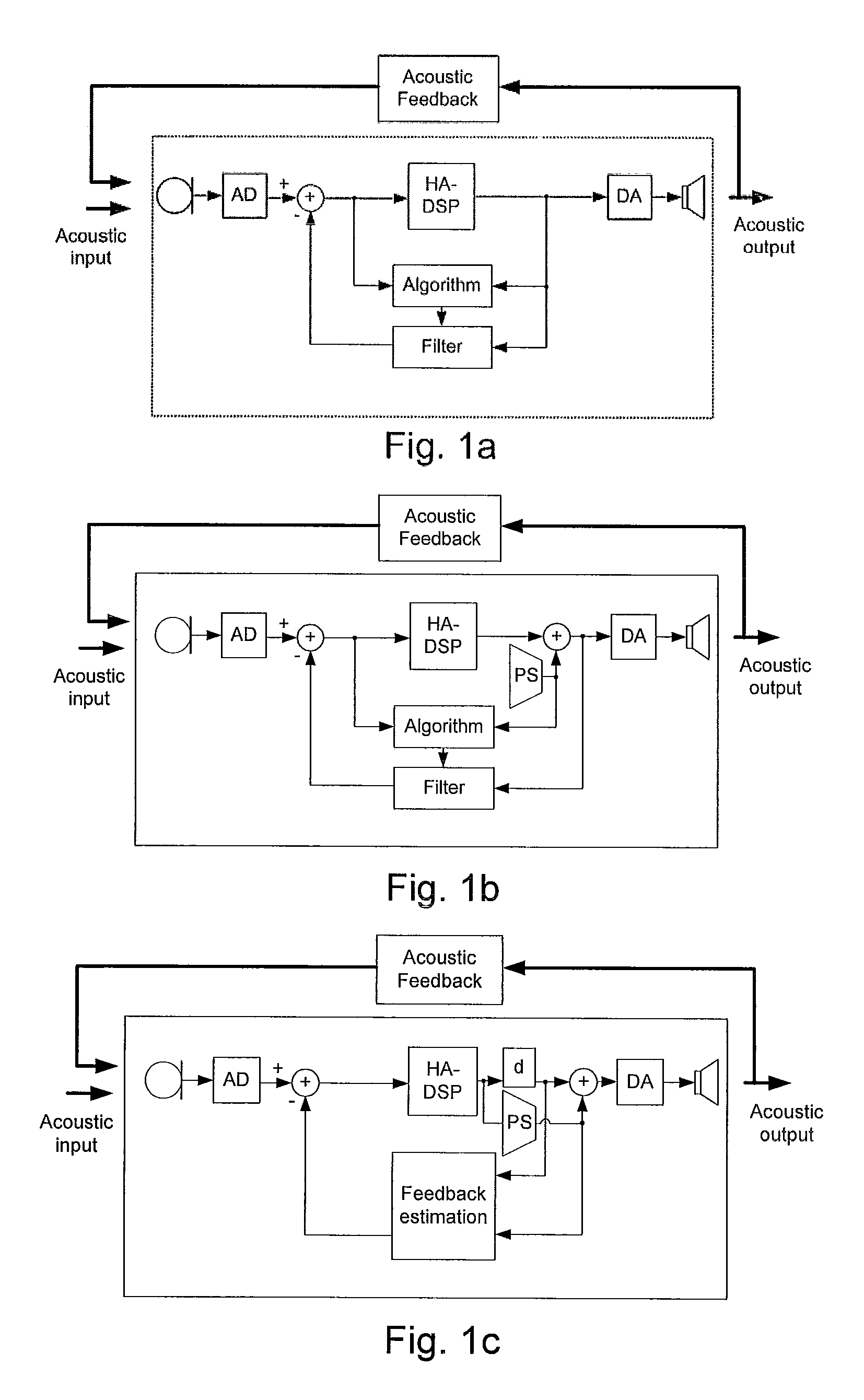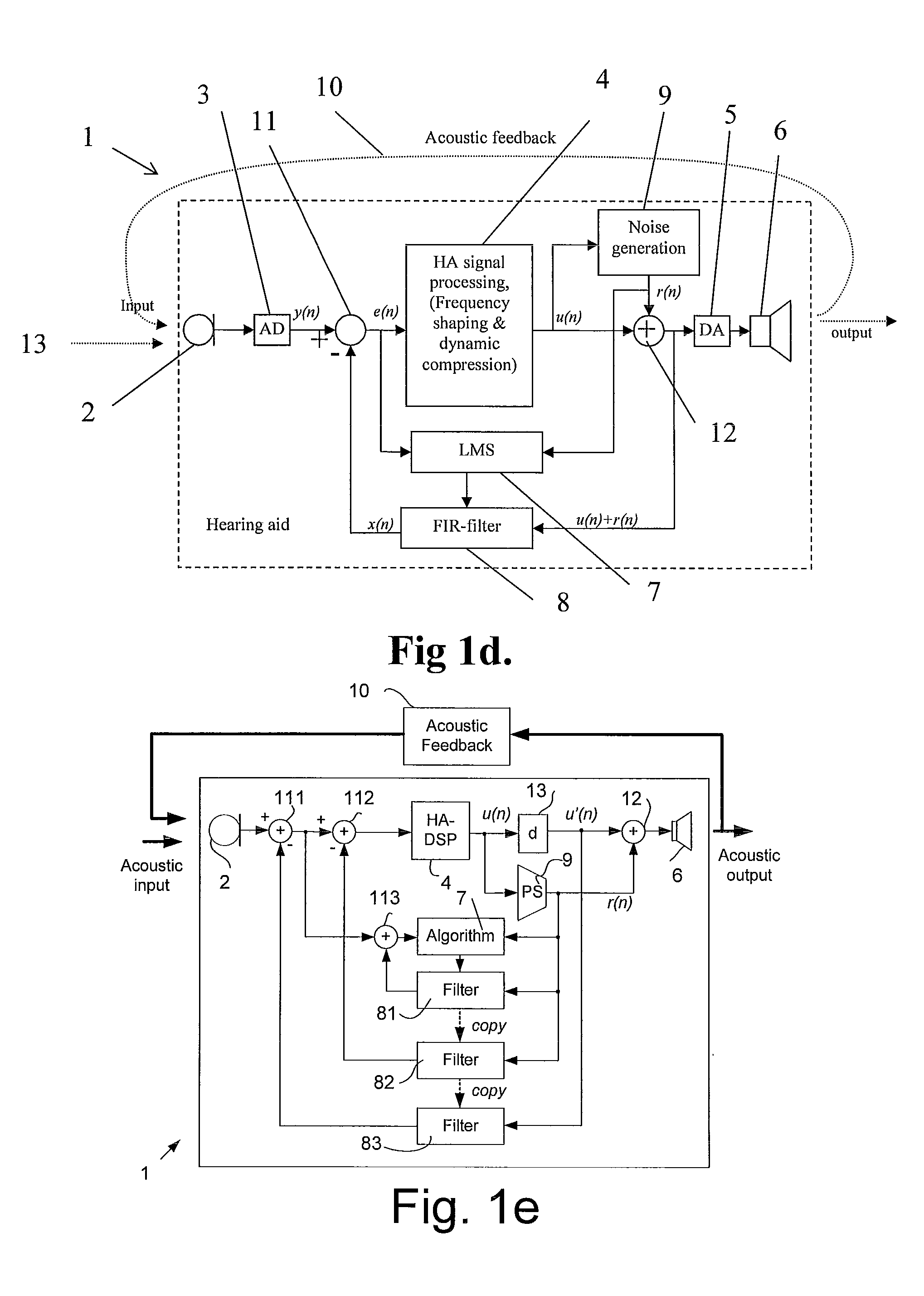Generation of probe noise in a feedback cancellation system
- Summary
- Abstract
- Description
- Claims
- Application Information
AI Technical Summary
Benefits of technology
Problems solved by technology
Method used
Image
Examples
Embodiment Construction
[0065]In the following, embodiments of the invention exemplified in relation to hearing aids are discussed. The examples may likewise be implemented in relation to other audio systems.
[0066]A hearing aid according to an embodiment of the invention is shown in FIG. 1c, wherein the forward path comprises a microphone a signal processing unit (HA-DSP in FIG. 1c) and receiver. A probe noise generator (PS in FIG. 1c) takes an input from the forward path (here from the output of the signal processing unit) and generates a probe noise signal as described below (cf. e.g. FIGS. 2-4), which is fed to a feedback estimation unit (Feedback estimation in FIG. 1c) as well as being added to the (optionally delayed, cf. block d in FIG. 1c) output from the signal processing unit, the sum of the two signals being converted to an acoustic signal by the receiver. Analogue to Digital (AD) and Digital to Analogue (DA) converters are indicated in the forward path after the microphone and before the receive...
PUM
 Login to View More
Login to View More Abstract
Description
Claims
Application Information
 Login to View More
Login to View More - R&D
- Intellectual Property
- Life Sciences
- Materials
- Tech Scout
- Unparalleled Data Quality
- Higher Quality Content
- 60% Fewer Hallucinations
Browse by: Latest US Patents, China's latest patents, Technical Efficacy Thesaurus, Application Domain, Technology Topic, Popular Technical Reports.
© 2025 PatSnap. All rights reserved.Legal|Privacy policy|Modern Slavery Act Transparency Statement|Sitemap|About US| Contact US: help@patsnap.com



